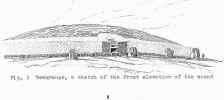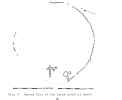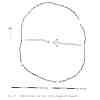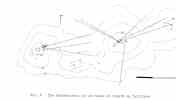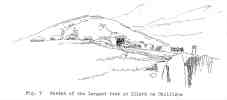 | Caithness.Org | Community | Business | Entertainment | Caithness... | Tourist Info | Site Map |
• Advertising • Chat Room • Contact Us • Kids Links • Links • Messageboard • News - Local & Scottish • News - UK & News Links • About / Contact Us • Submissions |
• Bookshop • Business Index & News • Jobs • Property For Sale • Property For Rent • Shop • Sutherland Business Index |
• Fishing • Fun Stuff • George, The Saga • Horses • Local Galas • Music • Pub Guide • Sport Index • What's On In Caithness |
• General Information • B & Bs • Backpackers • Caravan & Camping • Ferries • Getting Here • Holiday Letting • Hotels • Orkney • Pentland Firth • Sutherland • Taxis |
| N E W S F E E D S >>> |
|
Caithness Field Club Bulletin |
| THE PASSAGE GRAVE CEMETERIES OF COUNTY
MEATH Jack Saxon For anyone who is interested in the chambered tombs a pilgrimage to the Passage Grave Cemeteries of Co Meath in the Republic of Ireland is to be most strongly recommended; not only is it an experience likely to be remembered, but it will throw a whole new light on the Neolithic revolution. Here we don't just have a couple of cairns in a group, but up to forty! And some of the passage graves are both enormous and also richly-endowed with carved decoration - the real Neolithic art. Although I lived in Ireland from the spring of 1949 to the autumn of 1950 I never managed to visit the tombs of Co Meath; Most of the antiquities I visited were in the five counties of Northern Ireland. The Ulster antiquities were impressive enough, but could not have prepared me for the magnificence of those of Co Meath. I think it would be quite possible to fill three weighty volumes with the descriptions of just one of these groups of tombs. I am going to attempt the impossible by describing two groups in a few pages. The first, and most important group is at Brugh na Boinne, between Drogheda and Navan, famous both in Irish mythology and archaeology. A sketch map of this group is given in Fig. 1. Those of you who are familiar with the literature on passage graves will probably immediately recognise the name 'Newgrange' as the outstanding tomb of this group. The plan view, Fig. 2, can serve merely to indicate the sheer size of the mound. I made a sketch of the tomb, Fig. 3, and even this does not do justice to the stunning aesthetic appearance of the mound. The whole front of the mound is faced with exotic, mainly white, stones, with the exception of the forecourt which is faced with dark stones. Above the entrance can be seen what Prof O'Kelly called the 'roof box', a kind of window opening which allows the sun to shine into the tomb at the winter solstice. This is not accidental or unique, a similar device occurs at the Knowth (eastern) chamber. Large curbstones flank the entire mound, even at the entrance, and it must have been necessary to climb over them to enter. A flight of seven wooden steps allows the visitor to enter. This will give some idea of the size of the kerbstones. Many of the curbstones are richly decorated with spiral, circular, linear and zigzag patterns incised into the stone.. A setting of large stones stand before the entrance. Excavation work is still going on at the back of the mound and so the visitor cannot get an entire view of the monument, but the guide, on the day that we visited, was an archaeologist which was a bonus. The entrance passage rises as we go in and the interior is well lit. It is thus possible to see the carvings which occur on some of the orthostats and lintels. Large stone basins are still to be seen in the chambers themselves. They were too large to be removed so the implications are that they were put in position when the tomb was under construction. The same thing is also true of the sarcophagus in the pyramid of Khufu in Lower Egypt! I suppose it would take weeks to explore all the tombs in this complex. We made a point of seeing the three largest. The large mound at Dowth has been badly mutilated as a result of ill-advised digging in the middle of the 19th century but it remains a very impressive monument. Figure 4 shows the ground plan of the mound. The mound is completely overgrown and covered in whins and the entrance to the chamber is in private land. It is therefore hoped that some accommodation can be made with the landowner to give the public the right of access. It is, nevertheless, worth visiting. The third large mound is at Knowth, Fig. 5. This is currently being exhaustively excavated so the general public cannot get access. There is, however, a high platform erected near to the public road which allows a good overview of the site. As can be seen from Fig. 1, this tomb differs from the others by having satellite tombs all round it. When the excavations are complete and the cemetery restored it should more than rival Newgrange. This is a very exciting site, even in its present state of excavation. The second group of tombs we visited was at Sliabh na Caillighe. Lying about 40 km to the west it comprises thirty-one tombs, mostly on the summit of four hills, whereas, at Bruga na Boinne they are on fairly low farmland in a great loop of the River Boyne. The result is that the Sliabh na Caillighe tombs can be seen from a great distance, and were clearly intended to be seen. Figure 6 shows the distribution of the tombs. There is a car park at the foot of Sliabh na Caillighe where instructions are given for the keeper of the keys for the largest mound. Four of the hills in this range are higher than 240m so you should be prepared for a bit of walking, but what a view you get from the summit! The probability is that you will be the only person on the hill which adds to the sense of mystery. Figure 7 shows the largest tomb with the ruins of a smaller one in the foreground. Although much smaller than those at Brugh na Boinne, the carvings on the stones are every bit as impressive, especially in the chamber itself. If anything the designs are tighter and more 'artistic' perhaps more carefully executed. And, of course, the ruined ones give you a good idea of the internal layout of the passages and chambers. Access to the Brugh na Boinne group is from the N51 which runs between Drogheda and Navan. Dowth and Knowth are adjacent to the main road but Newgrange is down a side road. Car parking is available. It would be wise to find out in advance the hours of opening of Newgrange. It is a popular place to visit and parties are taken round in groups small enough to allow the visitor elbow room. There is a charge for entry. In the same area there is Slane Castle, Mellifont abbey and Monasterboice, not to mention the site of the Battle of the Boyne which took place on 1 July 1690. To get to Sliabh na Caillighe take the N3 from Navan to Kells where the High Crosses are worth seeing, then the R163 and R154 to Oldcastle looking out for the sign for Sliabh na Caillighe. Free car parking is available. The Book of Kells is, of course, in Dublin. FURTHER READING Jack Saxon |





